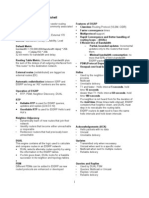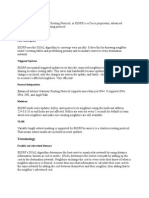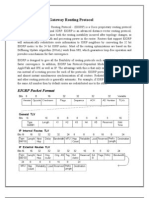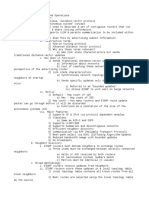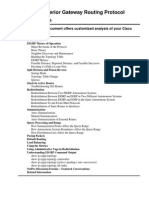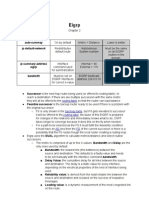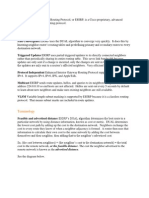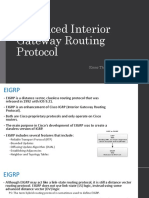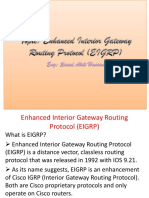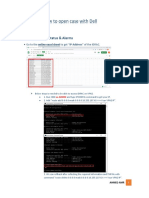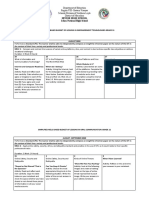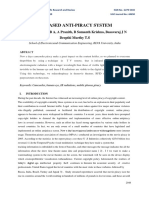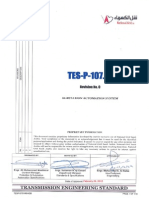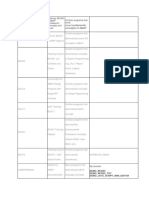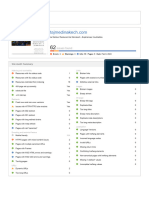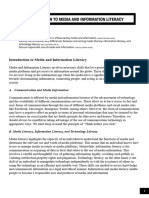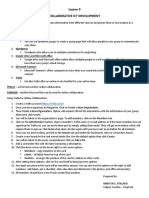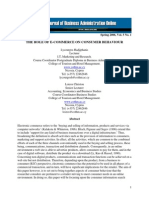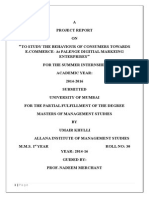0% found this document useful (0 votes)
10 views18 pagesEigrp Notes
EIGRP (Enhanced Interior Gateway Routing Protocol) is a Cisco-developed hybrid routing protocol that uses multicast and unicast for information exchange and is designed to be loop-free. It employs a reliable transport mechanism for packet delivery and utilizes metrics such as bandwidth, delay, load, and reliability to determine the best path. EIGRP supports both IPv4 and IPv6, offers fast convergence, and can be configured for security through authentication methods like plaintext and MD5.
Uploaded by
Ah M EdCopyright
© © All Rights Reserved
We take content rights seriously. If you suspect this is your content, claim it here.
Available Formats
Download as PDF, TXT or read online on Scribd
0% found this document useful (0 votes)
10 views18 pagesEigrp Notes
EIGRP (Enhanced Interior Gateway Routing Protocol) is a Cisco-developed hybrid routing protocol that uses multicast and unicast for information exchange and is designed to be loop-free. It employs a reliable transport mechanism for packet delivery and utilizes metrics such as bandwidth, delay, load, and reliability to determine the best path. EIGRP supports both IPv4 and IPv6, offers fast convergence, and can be configured for security through authentication methods like plaintext and MD5.
Uploaded by
Ah M EdCopyright
© © All Rights Reserved
We take content rights seriously. If you suspect this is your content, claim it here.
Available Formats
Download as PDF, TXT or read online on Scribd
/ 18










